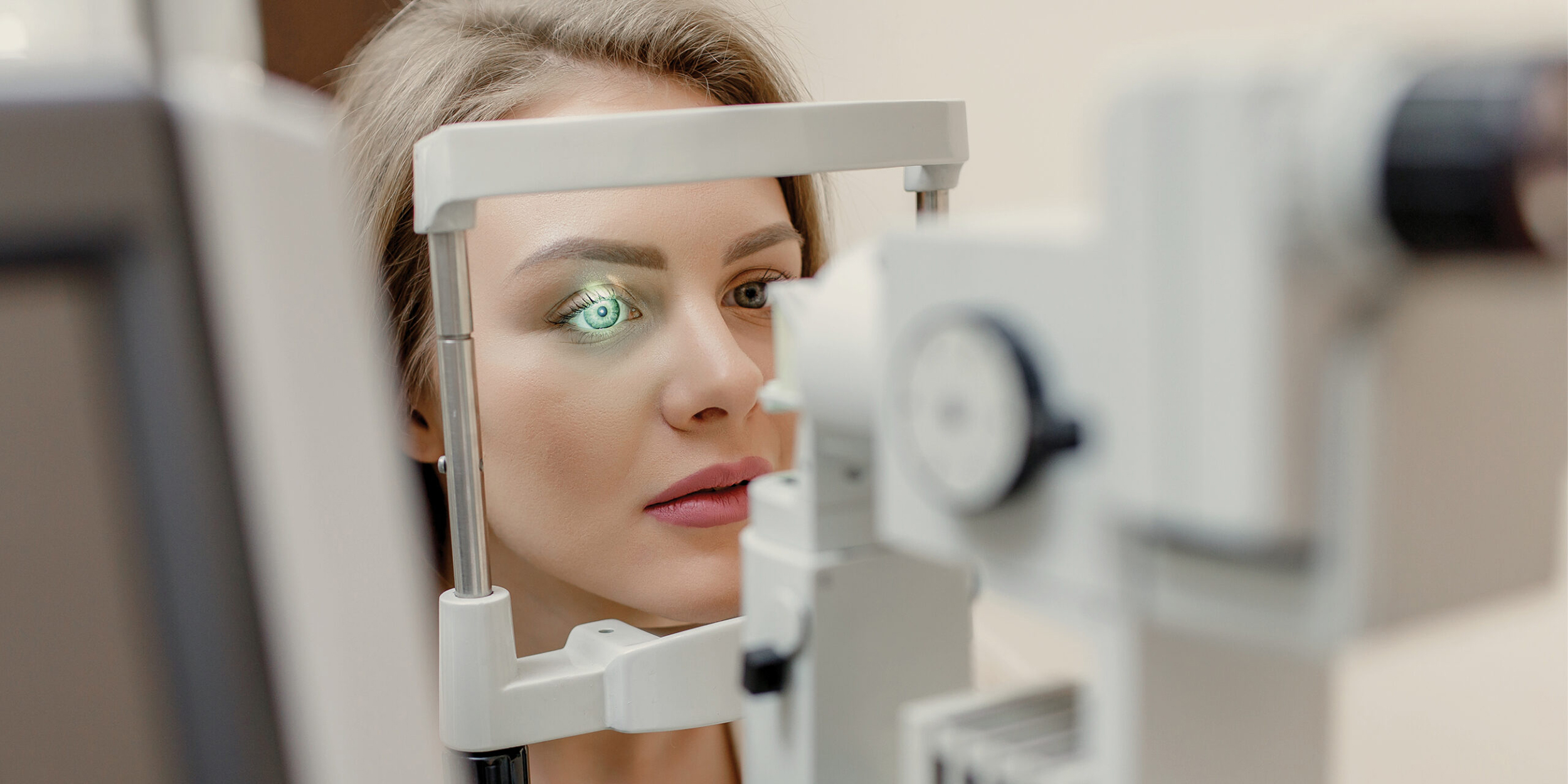
What is Keratoconus?
Keratoconus is a progressive thinning of the central area of the cornea (the clear window to the eye). As the disease progresses, the cornea gradually loses its regular shape and develops an irregular cone shaped bulge. The increasing corneal irregularity creates distortion causing blurring, ghosting, flaring of lights and reduces the overall quality of vision. This is associated with frequent changes in spectacle prescription and symptoms of eye strain, headaches, and dry, irritated eyes. Keratoconus does not progress to blindness.
 Scroll to Read More
Scroll to Read More





Usually in the early teens to the early 20’s. The earlier the keratoconus develops, the more rapidly the condition progresses. If untreated, keratoconus usually progresses until the 40’s.

The exact cause is unknown, however genetic, and environmental factors are important and the influence of these factors will vary from person to person. Approximately 10% of people with keratoconus have a relative with keratoconus and it is important that members of the family are screened for keratoconus, especially children from the age of eight. Keratoconus is often associated with allergies, asthma, and eczema.

Excessive and intense eye rubbing from allergies has been associated with progression of keratoconus and must be avoided.

Most cases are diagnosed by performing corneal topography. A corneal topographer accurately scans the shape of the cornea and detects any significant asymmetry. In early cases of keratoconus, the eye may appear normal, and a corneal scan is the only test that can diagnose keratoconus. A corneal thickness measurement (pachymetry) is also an important part of a diagnosing keratoconus, as progressive corneal thinning is a feature of keratoconus.

In early keratoconus, good vision can be achieved with spectacles and soft contact lenses. As keratoconus progresses, the quality of vision deteriorates due to the increasing corneal distortion and rigid contact lenses are required. Rigid contact lenses, such as corneal rigid gas permeable lenses, hybrid lenses and scleral lenses, neutralise most of the distortion and can substantially improve the quality of vision. The good news is that 90% of people with keratoconus can achieve functional vision with spectacles or contact lenses. In advanced keratoconus, contact lenses can become less successful due to difficulties obtaining a suitable contact lens fitting, contact lens intolerance, and poor vision. At this stage, a corneal graft may become necessary. Only 10% of people with keratoconus require a corneal graft to restore their vision.

Corneal Cross-Linking (CXL) is a treatment that stiffens the cornea and prevents further progression. This treatment is effective in 90% of cases and should be recommended for progressive keratoconus. Vision may improve following corneal cross-linking treatment, however there is no guarantee this will happen. For this reason, corneal cross-linking treatment should be performed as soon as progressive keratoconus is confirmed, to stabilise the corneal shape before the quality of vision deteriorates.

Soft Contact Lenses
Standard disposable lenses can give effective vision in early keratoconus, especially for social and sporting activities. In more advanced cases, custom designed soft lenses can also give good vision with excellent comfort and stability.
Corneal Rigid Gas Permeable Contact Lenses
Rigid lenses are needed when spectacles or soft contact lenses are no longer able to provide adequate vision. The rigid surface neutralises 90% of the corneal distortion and can significantly improve the quality of vision, especially at night. Corneal gas permeable lenses require customised fitting to ensure the best possible comfort, vision, and stability. Recent advances in computer aided contact lens design programs and manufacturing allow optometrists to successfully fit even advanced cases of keratoconus.
Piggyback Contact Lenses
This system uses a soft contact lens underneath a rigid gas permeable contact lens. Piggyback lenses are prescribed to improve overall comfort and tolerance of a corneal rigid gas permeable lens. Only 2% of contact lenses prescribed for keratoconus are piggyback contact lenses.
Hybrid Contact Lenses
These have a rigid gas permeable centre with a soft periphery and can give the clarity of a hard lens with the comfort and stability of a soft lens. The latest hybrid lenses have high oxygen permeability to support good corneal health. Hybrid lenses are an excellent choice for people who cannot tolerate corneal rigid gas permeable contact lenses or who require guaranteed stability, such as in active sport.
Scleral Contact Lenses
Scleral lenses rest on the white part of the eye and do not touch the cornea. Scleral lenses have minimal interaction with the eyelids and are remarkably comfortable. They do not fall out and do not allow any foreign bodies under the lens. Scleral lenses are produced in highly gas permeable materials and are custom designed to individually match the shape of the sclera and cornea. A scleral lens is an excellent choice for people who have keratoconus and are unable to tolerate a corneal rigid gas permeable contact lenses or only need to wear a contact lens in one eye.


